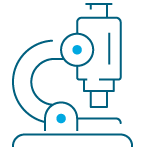Well-Woman Preventive Visits

Clinical Recommendations
The Women’s Preventive Services Initiative recommends that women receive at least one preventive care visit per year beginning in adolescence and continuing across the lifespan to ensure the provision of all recommended preventive services. The primary purpose of well-woman visits is the delivery and coordination of recommended preventive services as determined by age and risk factors. These services may be completed at a single visit or as part of a series of visits that take place over time to obtain all necessary services depending on a woman’s age, health status, reproductive health needs, pregnancy status, and risk factors. Well-women visits also include prepregnancy, prenatal, postpartum and interpregnancy visits.

Implementation Considerations
Well-woman preventive services may include, but are not limited to, assessment of physical and psychosocial function, primary and secondary prevention and screening, risk factor assessments, immunizations, counseling, education, prepregnancy care, and many services necessary for prenatal, postpartum and interpregnancy care. Visits should allow sufficient time to address and coordinate services, and a team-based approach may facilitate delivery of services. Recommended services are evidence-based items or services that have in effect a rating of “A” or “B” in the current recommendations of the United States Preventive Services Task Force, and immunizations that have in effect a recommendation from the Advisory Committee on Immunization Practices of the Centers for Disease Control and Prevention. Recommended services for adolescents also include evidence-informed preventive care and screenings provided for in the comprehensive guidelines supported by the Health Resources and Services Administration, and for women, such additional preventive care and screenings as provided for in comprehensive guidelines supported by the Health Resources and Services Administration.
The Recommendations for Well-Woman Care – A Well-Woman Chart provides a framework for incorporating preventive health services for women into clinical practice.

Research Recommendations
- Research to identify uptake and variations in the delivery of women’s preventive services by clinical specialty (eg, family medicine, internal medicine, ob-gyn, midwifery); health delivery system; and patient population, among other factors.
- Studies to evaluate effective methods for delivering multiple, separate preventive services more efficiently (eg, provide preventive services as clusters of related conditions; develop screening methods that detect more than one condition concurrently; incorporate prevention services opportunistically in the course of clinical care).
- Research on barriers to preventive care particularly among populations experiencing health disparities, adolescents, and diverse populations of older women.
- Studies of the effectiveness of preventive care visits to improve use of preventive services among patients, such as cancer screening, and subsequent health outcomes.
Updated by the WPSI: 2016, 2022
For the previous version of this recommendation, please see the 2016 final report.
*These are the recommendations of the WPSI and not necessarily of any individual participating organization.
